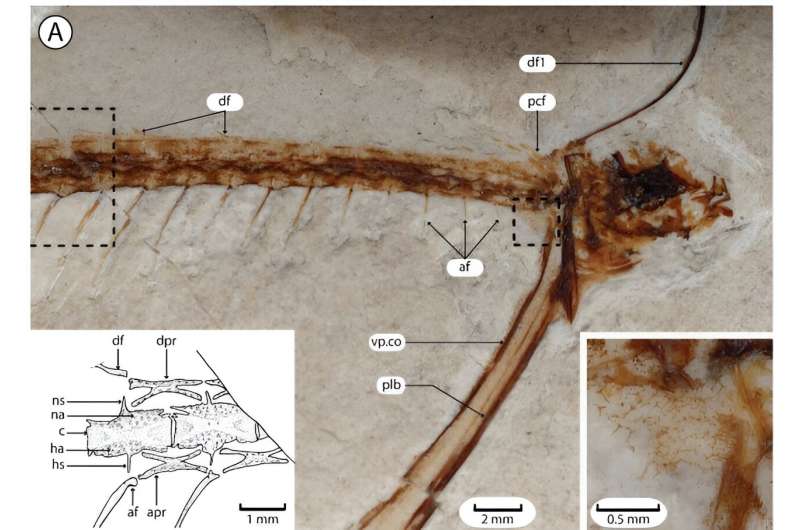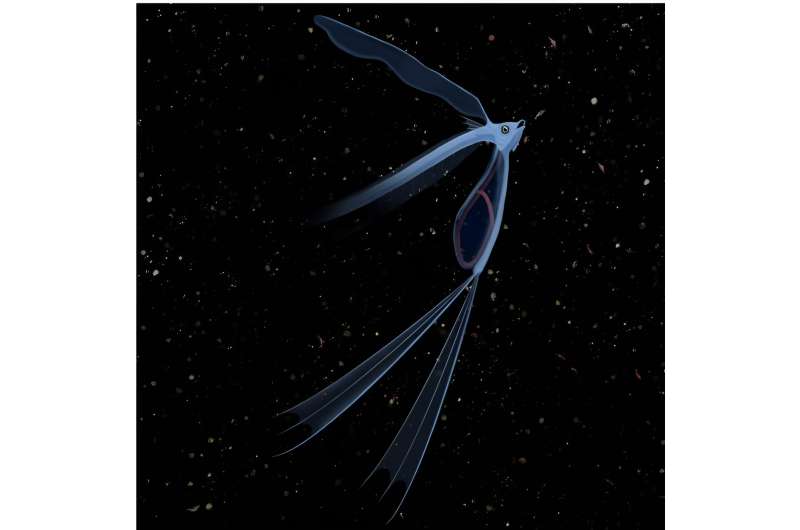September 6, 2024 report
This article has been reviewed according to Science X's editorial process and policies. Editors have highlighted the following attributes while ensuring the content's credibility:
fact-checked
preprint
trusted source
proofread
Mysterious 50-million-year-old fish to get a new genus

A pair of paleontologists, one with the Museum für Naturkunde, in Germany, the other from the Università degli Studi di Torino, in Italy, has found new evidence that an ancient fish, which has defied categorization for hundreds of years, may belong to fishes in the group Teleostei. Donald Davesne and Giorgio Carnevale have published a paper describing their analysis of the only two known fossil samples of the fish on the bioRxiv preprint server.
Back in the 1700s, a fossilized fish was found in the northern part of Italy. Its appearance was so unlike any other find that it was impossible to classify. Clearly it was a new species, but what family did it come from? No one could say. Giovanni Serafino Volta, a naturalist who worked to identify other fish, classified it within the genus Pegasus, which lumped it in with seamoths.
Since that time, others in the field have pointed out that the fish fossil bears no resemblance to seamoths. Still, no one else could come up with anything better, even after another specimen was found; thus, it has held on to its genus.
In this new effort, the researchers undertook an intensive study of both fossils, hoping to establish a true classification on the tree of life.
Like others before them, the researchers noted that the ancient fish, which has been dated to approximately 50 million years ago, had a ribbon-like body. The researchers took pictures of the fossils using an ultraviolet light and observed them with a stereomicroscope. This allowed them to rule out classification within the oarfish family, one possibility suggested by others.

The pair did note similarities between the fossils and cusk-eel larvae and also other fish in the Teleostei group—many have long dorsal fins similar to those of the fossilized fish. They also noted that it had an exceptionally thick abdomen, which, they note, suggested it likely had a pouch further below that held its internal organs; another finding that points to Teleostei.
On the other hand, the pair found no evidence suggesting that the fossils were larvae—instead, their large bodies and ossified skeletons suggested they were adults. But the researchers suggest that the fossils could have simply matured, and therefore still exhibited larval traits.
The researchers acknowledge that they were unable to find any firm relationship between the fossils and any other type of fish, but still insist the ancient specimens need a new genus—they plan to announce the one they have chosen for it when their paper is officially published.
More information: Donald Davesne et al, An extraordinary larval-like teleost fish from the Eocene of Bolca, bioRxiv (2024). DOI: 10.1101/2024.08.19.608581
Journal information: bioRxiv
© 2024 Science X Network





















